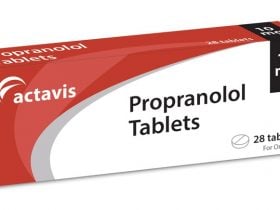This drug can be very dangerous if used inappropriately. The food and drug administration (FDA) gave out a strong warning that alerts medical professionals about the side effects of this medication.
Onfi can be used with several drugs such as opioids. When used with opioids it leads to some side effects, which include sedation (severe drowsiness or tiredness) and respiratory malfunction. In severe cases, it could lead to death.
If you have to use onfi with opioids, make sure you use the smallest dose that’s effective for you. This drug should be used as recommended by your doctor.
What Is It Used For?

Onfi is a brand-name prescription drug. It is used to treat seizures in patients diagnosed with a rare kind of epilepsy known as Lennox-gastaut syndrome. This is why it is used as a joint treatment with other epilepsy drugs. Only adults and children older than 2 are allowed to use onfi.
Onfi occurs in two forms; as a tablet and an oral suspension. The oral form is administered by using an oral syringe to take the drug. The potent clobazam is a constituent of onfi and it is in the se class of drugs known as enzodiazepines. These drugs can cause several damages if misused. You must avoid using onfi with alcohol. The use of onfi is strictly monitored by federal law.
Clinical trials have shown the effectiveness of onfi in treating seizures. In one study, people with LGS were told to use this drug or a placebo. After 12 weeks we discovered that the people who took onfi experienced great improvement in their seizures. Onfi is available in a generic form (clobazam). This form is as harmless and efficient as the original one. Onfi is approved for use in adults as well as children ages 2 years and older.
Seizures are alterations in the electrical activity of your brain. Mild seizures may show no symptoms, while severe seizures may show symptoms such as intense shaking. There are several kinds of seizures [1].
LGS is a rare and serious kind of epilepsy (a condition in which you have seizures repeatedly). It mostly starts in childhood, usually between ages 2 and 6 years. You can have any type of seizure. The most common are tonic seizures, atonic drop seizures, and generalized tonic-clonic seizures.
Also, people with LGS may also experience trouble learning and developmental delays, which can be moderate or severe. Although these learning and developmental problems occur in most people with LGS, they aren’t required for a diagnosis. And they may not be seen or noticeable during the beginning stages of LGS.
The cognitive function of people with LGS deteriorates with time. Cognitive functions include mental activities such as thinking, attention and memory.













